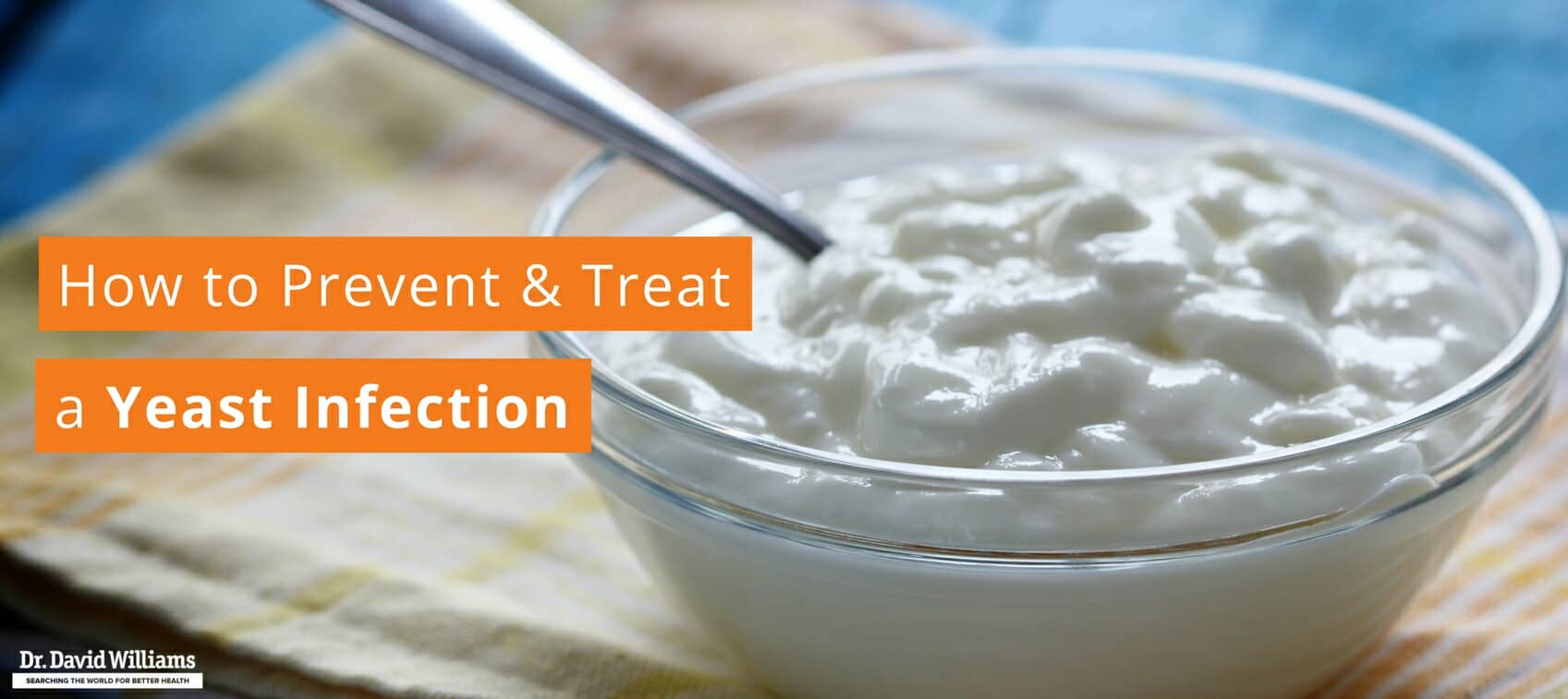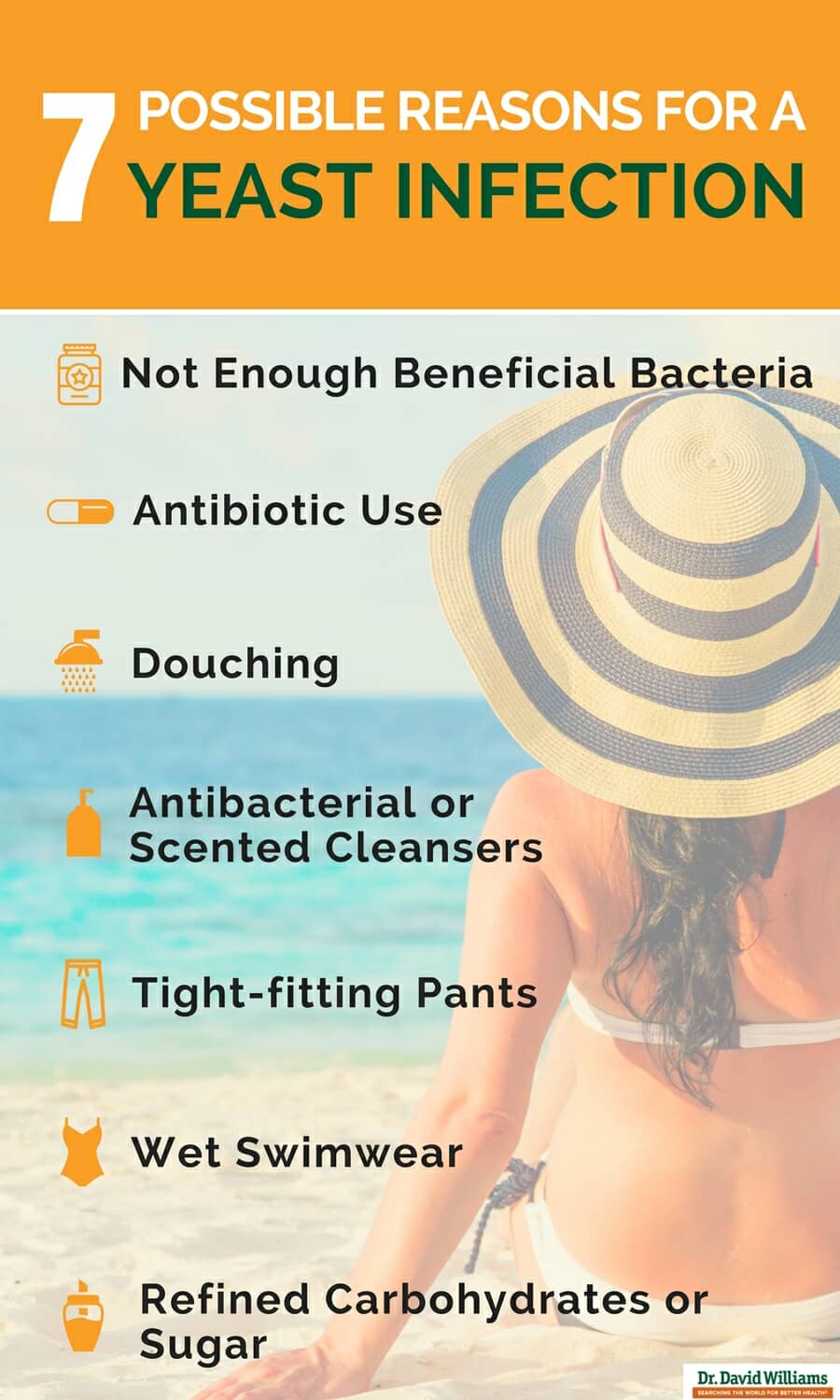
If you suffer from yeast infections, you’re not alone. According to Centers for Disease Control and Prevention, nearly 75 percent of women have had a yeast infection at least once, and for many women it’s a recurrent issue.
What causes yeast infections? Like in the colon, there is a constant turf war going on in the vagina between the good bacteria and bad bacteria. The good bacteria are trying to crowd out the bad bacteria as well as produce a substantial amount of lactic acid, which helps to keep the pH level of the vagina slightly acidic.
Maintaining a slightly acidic pH level is vitally important for women’s health because yeast and other bad bacteria have a difficult time thriving in an acidic environment. When the pH level is not balanced, it becomes easy for bad bacteria and excessive yeast to grow, resulting in yeast infections and other vaginal issues.
What Are the Symptoms of Yeast Infections?
The symptoms associated with vaginal yeast overgrowth can be incredibly uncomfortable. Some of these include:
- Vaginal itching
- Thick, clumpy discharge
- Red, irritated skin around the labia
- Painful urination
- Pain during intercourse
The symptoms of a yeast infection are very similar to other types of more serious infections. If you have any of the above symptoms, it's best to consult your doctor to be certain you're actually dealing with a yeast infection.
Causes of Yeast Infections
One of the best ways to prevent yeast infections is to know causes them. Here are a few possible causes of yeast infections:
- Insufficient levels of beneficial bacteria
This often stems from a lack of fermented foods in the diet. Beneficial bacteria can be replenished with homemade foods that contain live bacteria cultures (yogurt, kefir, sauerkraut, etc.) and/or a quality probiotic supplement. - Antibiotic use
Antibiotics are non-selective in their action. They kill ALL bacteria, including the good bacteria in your body that produce protective lactic acid. Antibiotic use is one of the most common causes of yeast infections. - Douching
While douching may seem like a good idea to keep your vagina clean, it can be counterproductive. Much like antibiotics, douching is not selective, so it removes beneficial bacteria, and adequate amounts of good bacteria are needed to keep the levels of harmful bacteria in check. When the proper bacterial balance is disrupted, yeast microorganisms are allowed to set up shop and flourish. - Antibacterial or scented cleansers
Scented and antibacterial cleaners continue to gain popularity by promising to provide a "clean and fresh" feeling. The feeling is often short-lived however. In addition to killing the favorable strains of bacteria in the vagina, these products disrupt the normal pH of the vaginal environment, setting the stage for a recurring yeast infection. - Tight-fitting pants
Yeast thrive in warm, moist environments. Tighter pants increase the heat and moisture in your genital area, increasing the chance of developing yeast infections. - Wet swimwear
For the reason mentioned above, anytime you go swimming, make sure to change out of your wet swimwear into dry clothes as soon as possible. - Increased consumption of refined carbohydrates and sugar
The common strain of yeast associated with vaginal infections, Candida albicans, feeds on sugars and simple carbohydrates. It is no coincidence that one of the most common symptoms of a Candida infection is a craving for sugar and carbohydrates. Avoiding (or at the very least minimizing) simple carbohydrates is essential if you want to eliminate or prevent yeast infections.
Effective Home Remedies for Yeast Infections
I have been doing extensive research and work with probiotics and problems like yeast overgrowth for several decades. Here are a few of the natural home remedies for yeast infections that I have discovered to be the most successful:
- Raw Garlic
Eating raw garlic might not make you any new friends in the short-term but, it has proven to be an effective method of dealing with yeast infections. Start with the freshest organic garlic you can find and the stronger and more pungent the garlic is, the better it will probably work. I suggest eating four or five large, raw cloves daily until the infection clears. - Powdered Boric Acid
Insert one gelatin capsule filled with 600 mg of boric acid into the vagina each day for 14 days. Studies using this method have found the cure rate to be over 90 percent after seven to 10 days, with no side effects. You can now find these boric acid vaginal suppositories online and at most pharmacies. - Yogurt
A yogurt douche can be another very effective method of restoring vaginal ph and beneficial bacteria flora. Simply insert 15 ml (1 tablespoon) of plain (unflavored, unsweetened) yogurt directly into the vagina twice daily for seven days. - Probiotics
In addition to preventative measures above, the regular, daily use of a quality probiotic supplement is one of the very best ways to prevent a yeast infections. They also speed up the recovery process if you develop one. Make sure to choose the best probiotics for yeast infections. Research has shown that a few specific strains of bacteria, Bacillus coagulans, Lactobacillus rhamnosus and Lactobacillus acidophilus, have been particularly effective in preventing and dealing with vaginal yeast infections. They are prolific producers of lactic acid which is necessary in maintaining the proper pH values necessary for a healthy intestinal tract. In addition to a quality probiotic supplement with these strains, don't overlook the importance of increasing your intake of live, fermented foods. They provide a rich and varied source of natural probiotics essential for achieving optimal health.



